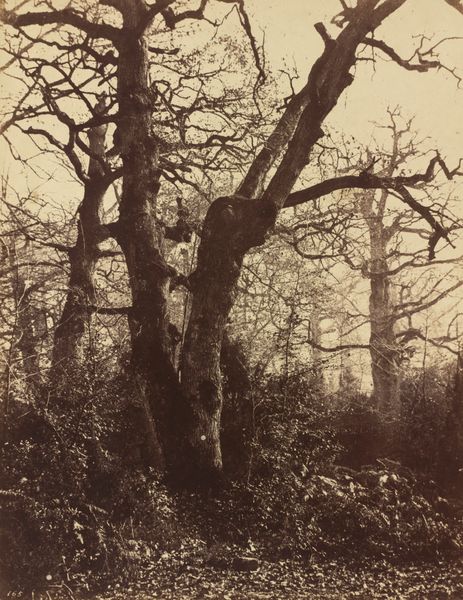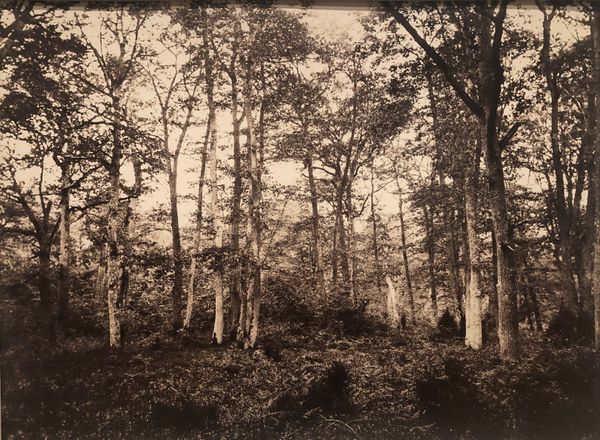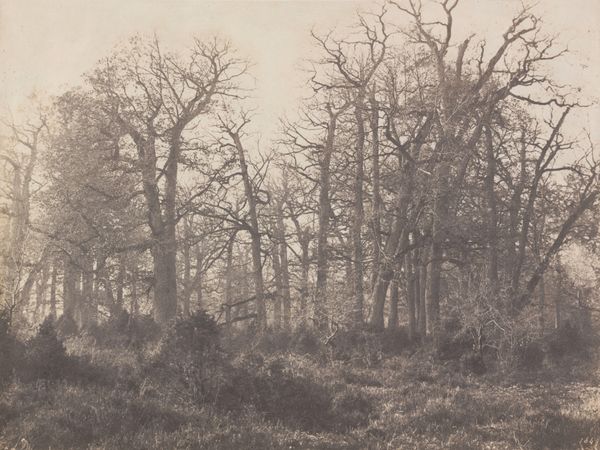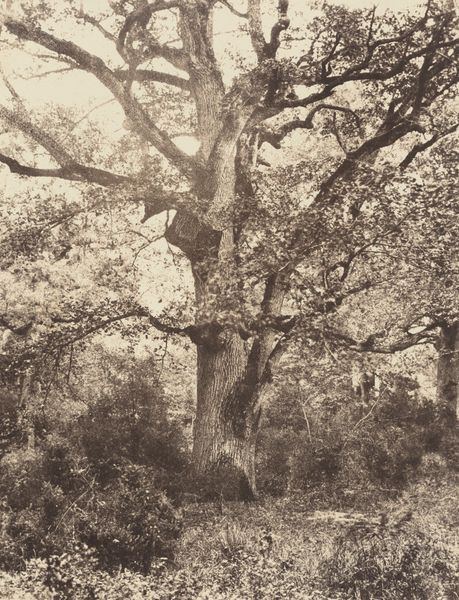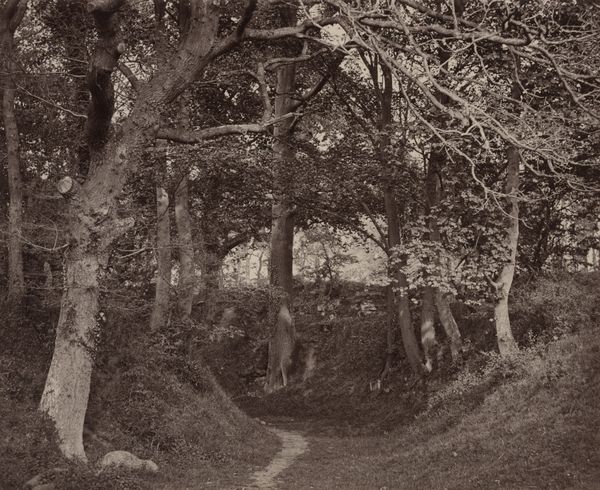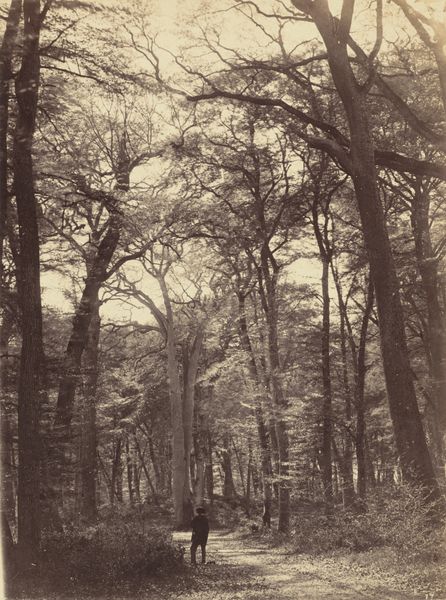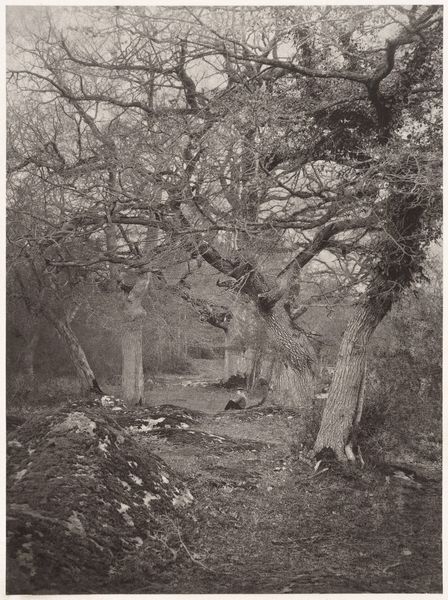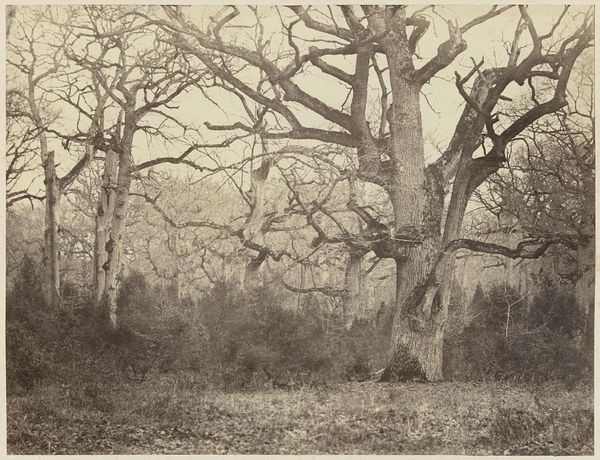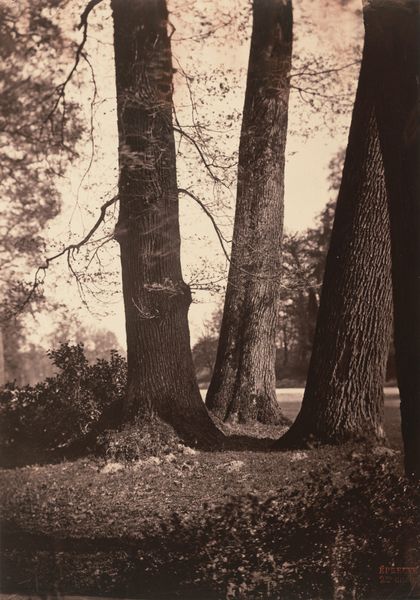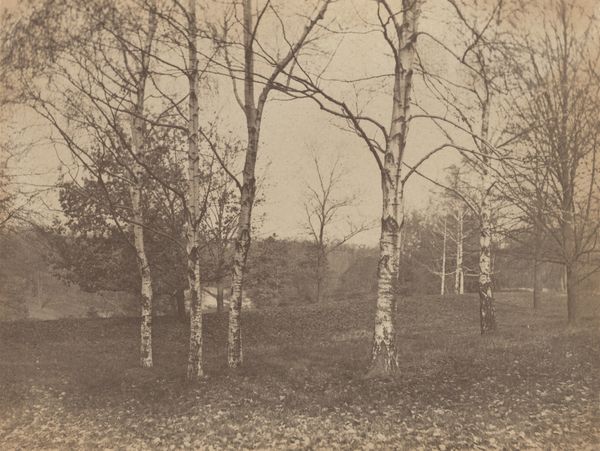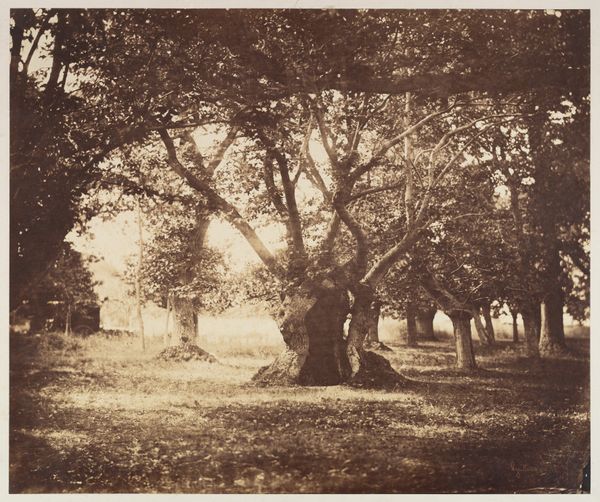
Dimensions: image/sheet: 21.1 × 26.9 cm (8 5/16 × 10 9/16 in.) mount: 35.7 × 43.3 cm (14 1/16 × 17 1/16 in.)
Copyright: National Gallery of Art: CC0 1.0
Curator: I'm immediately struck by the somber, almost melancholic mood of this landscape. The brown hues give it an antique feeling that suits this photographic still-life. Editor: Indeed. This piece, "Tree Study," created circa 1870 by A.W. Cox & Son, captures more than just a simple scene, doesn't it? It invites us to reflect on the natural world through a particular cultural lens. Curator: Precisely. Note the deliberate centering of the grand, aged tree, seemingly at the edge of something. It’s a symbol of resilience but also vulnerability. Look at the trunk. Notice anything? Editor: Yes, the way it's gnarled and somewhat decaying adds layers to that interpretation. Consider how landscape photography, during that time, was deeply entangled with ideas of empire, ownership, and Romantic notions of the sublime. This scene isn’t pristine wilderness. Curator: Good point. The fern-filled forest floor and delicate balance of shadow and light around the clearing suggest a narrative. The ferns become almost heraldic, repeating elements lending density to the scene, while the trunks give an imposing sense of age. Editor: What I see is that the nature that isn't just a backdrop, but almost has a feeling that time has rendered justice with these lands that colonizers can't deface with buildings. This tree persists with beauty regardless of being an object of conquest. Curator: The way they worked the photograph emphasizes stillness, encouraging the eye to linger. This artistic rendering captures and conveys the timeless character of nature that surpasses society and history. Do you agree that stillness may serve as an appeal against colonization, which depends on the rapid seizure of landscapes? Editor: Yes, though stillness might also reflect a Victorian sensibility – a longing for an idealized, untouched nature. Still, positioning this tree as a form of resilience reframes the image in a politically relevant way for our present. The enduring quality reminds me that the landscapes retain history, that colonization does not permanently eradicate local heritage or nature itself. Curator: I hadn't considered that colonial viewpoint of idealized nature that is also static in its idealized status and ownership, an enduring form. Thanks for opening up a way of looking at this photograph that adds layers. Editor: Thank you for helping me appreciate how landscape persists, in all of its beauty.
Comments
No comments
Be the first to comment and join the conversation on the ultimate creative platform.
